Archive
Ruth Staudinger
- Ruth
- Staudinger
Ruth (Staudinger-)Rozaffy, Ruth (Staudinger-)Davis, Ruth (Staudinger-)Schaffner
- 27-10-1914
- Karlsruhe (DE)
- 15-03-1996
- Nairobi (KE)
- PhotographerCinematographerArt dealer
Very few and only fragmentary details can be found on the German émigré photographer Ruth Staudinger, who emigrated in the mid-1930s to New York City. Her nomadic life was also characterisedd by several changes of name along the way.
Word Count: 40
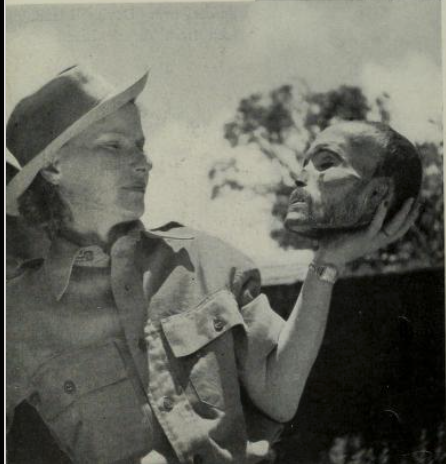
Hassoldt Davis (?), Ruth Staudinger Davis holds the mummified head of an executed Indochines (Davis, 1952, 22). 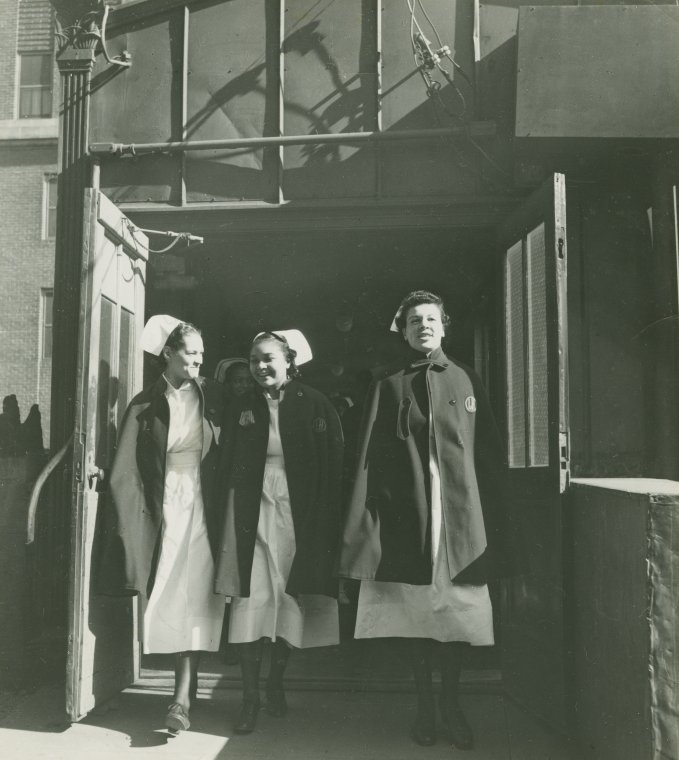
Ruth Staudinger Rozaffy, Going on duty, 1939 (Schomburg Center for Research in Black Culture, Photographs and Prints Division, The New York Public Library Digital Collections). 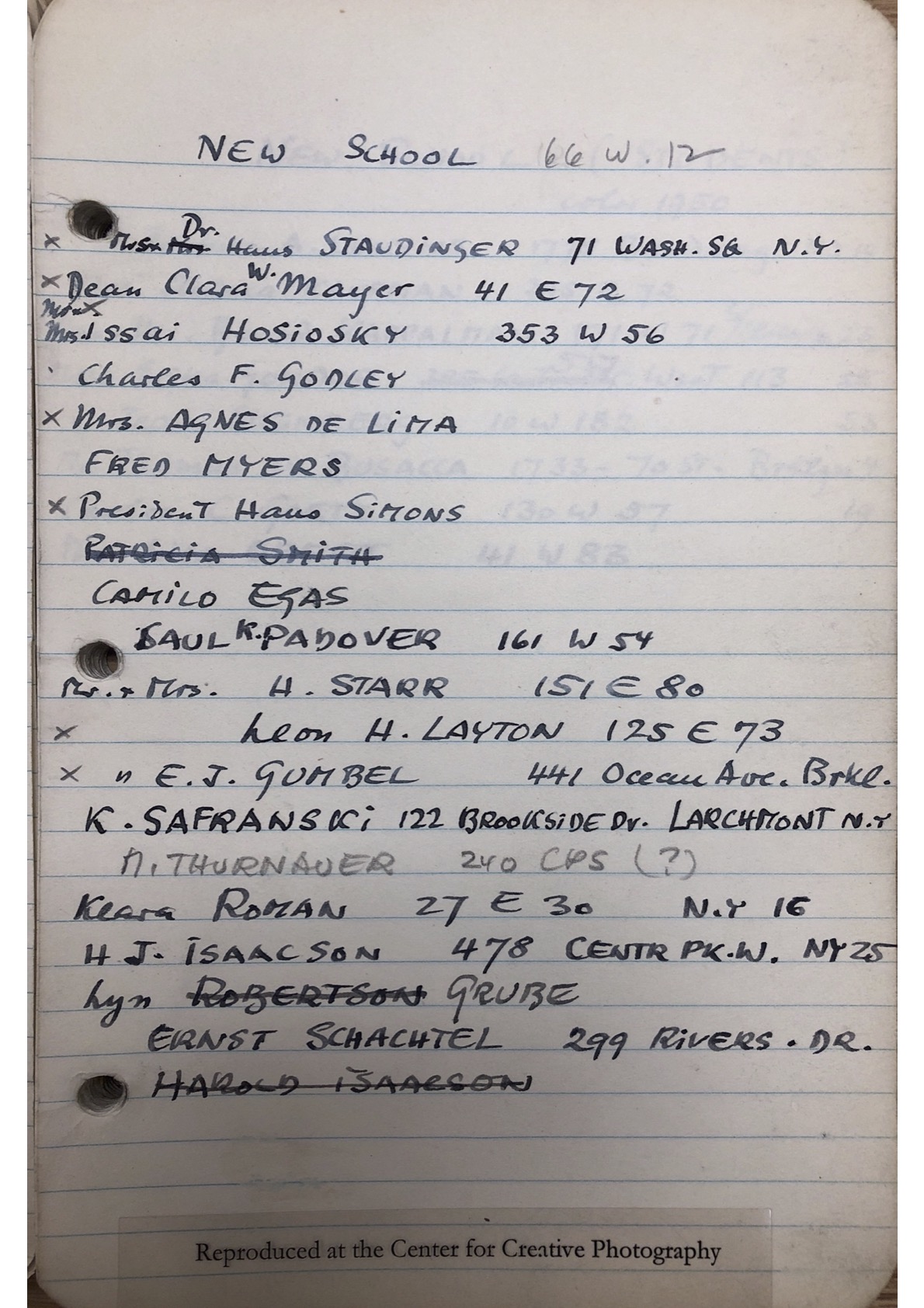
Page with collected addresses of colleagues at the New School for Social Research in New York by Josef Breitenbach (© The Josef and Yaye Breitenbach Charitable Foundation, courtesy of The Center for Creative Photography, Josef Breitenbach Archive, AG90:6). 
Ruth Staudinger Rozaffy, New York Bedtime, published in U.S. Camera 1940, p. 129 (Photo: Helene Roth). 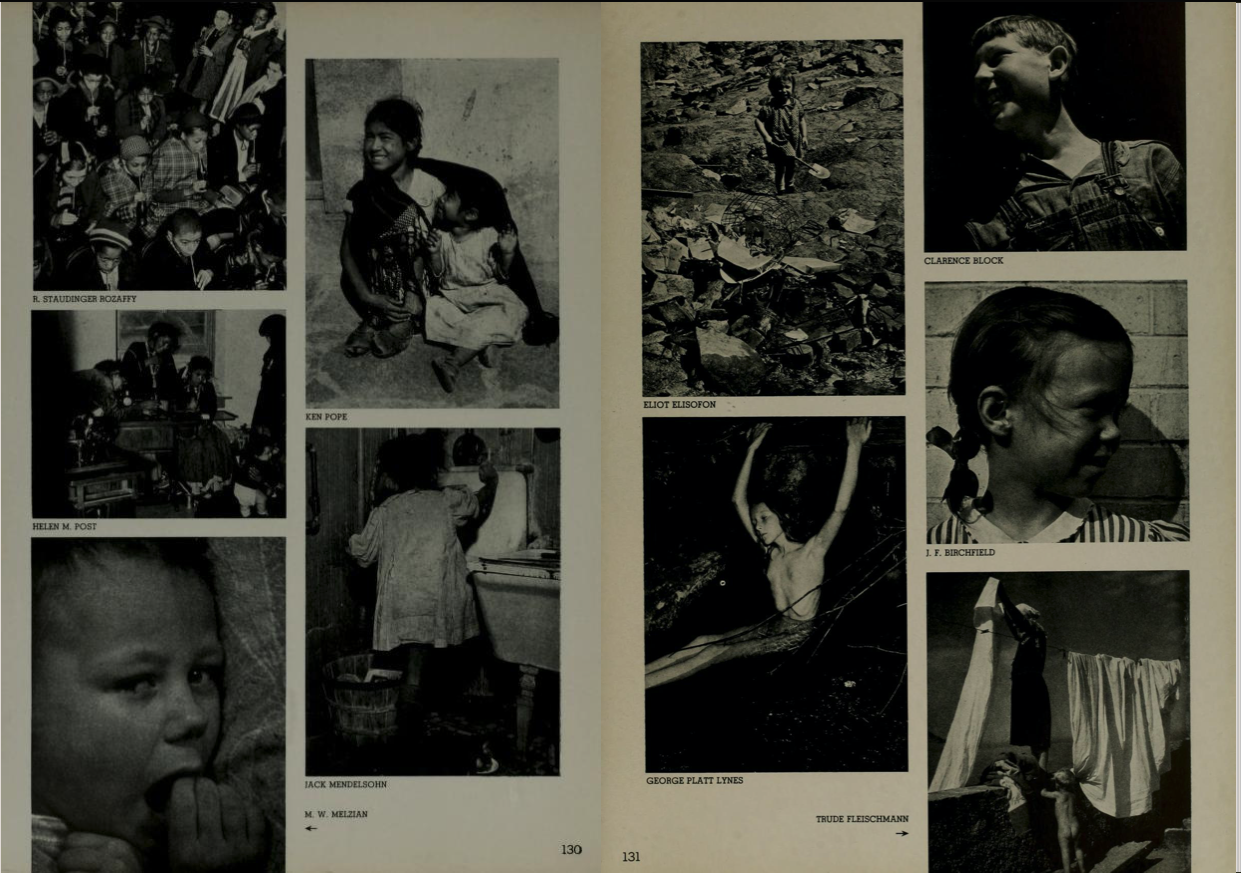
Ruth Staudinger Rozaffy, More Fun Than Circus, published in U.S. Camera 1940, p. 130 (Photo: Helene Roth). 
Ruth Staudinger Rozaffy, Girls from telephone company taking exercises in American Woman’s Association Gym, published in U.S. Camera 1940, p. 178 (Photo: Helene Roth). 
“Wiltwyck – Why Harlme Boys Learn Manhood” article with images by Ruth Staudinger Rozaffy (Anonymous 1941, 18–19). 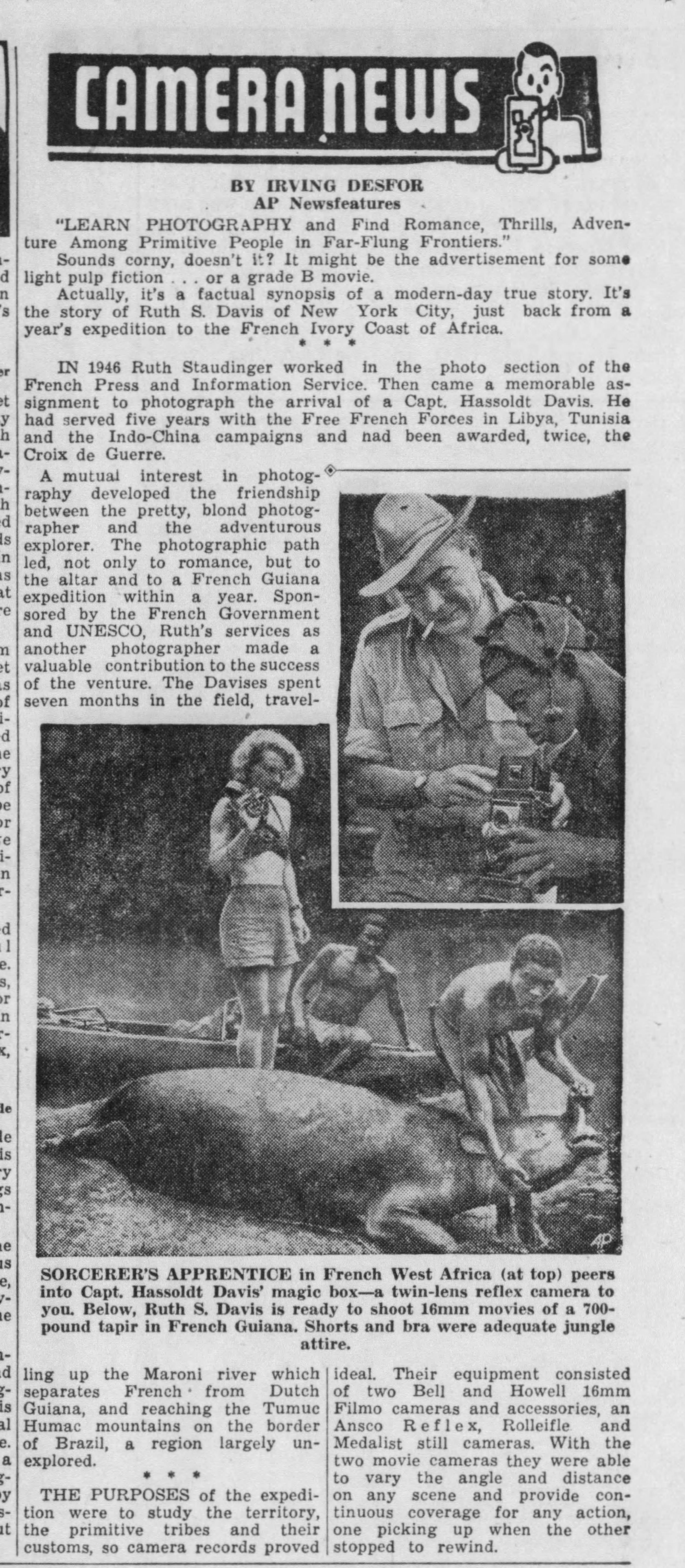
Article on Ruth Staudinger and Hassoldt Davis (Desfor 1951, 33). 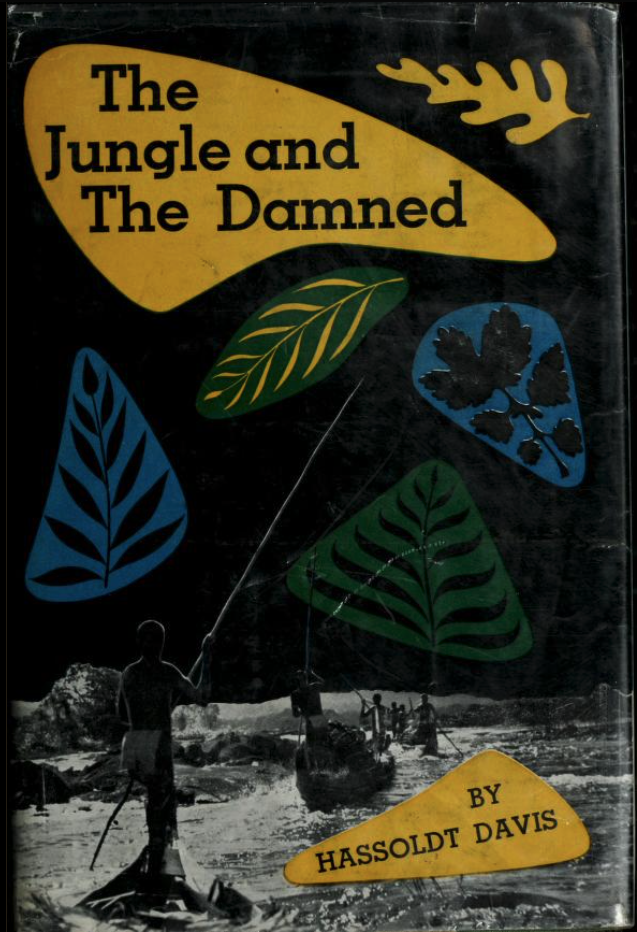
Cover of The Jungle and the Damned (Davis, 1952) (Photo: Helene Roth). 
First page of The Jungle and the Damned (Davis 1952) (Photo: Helene Roth). 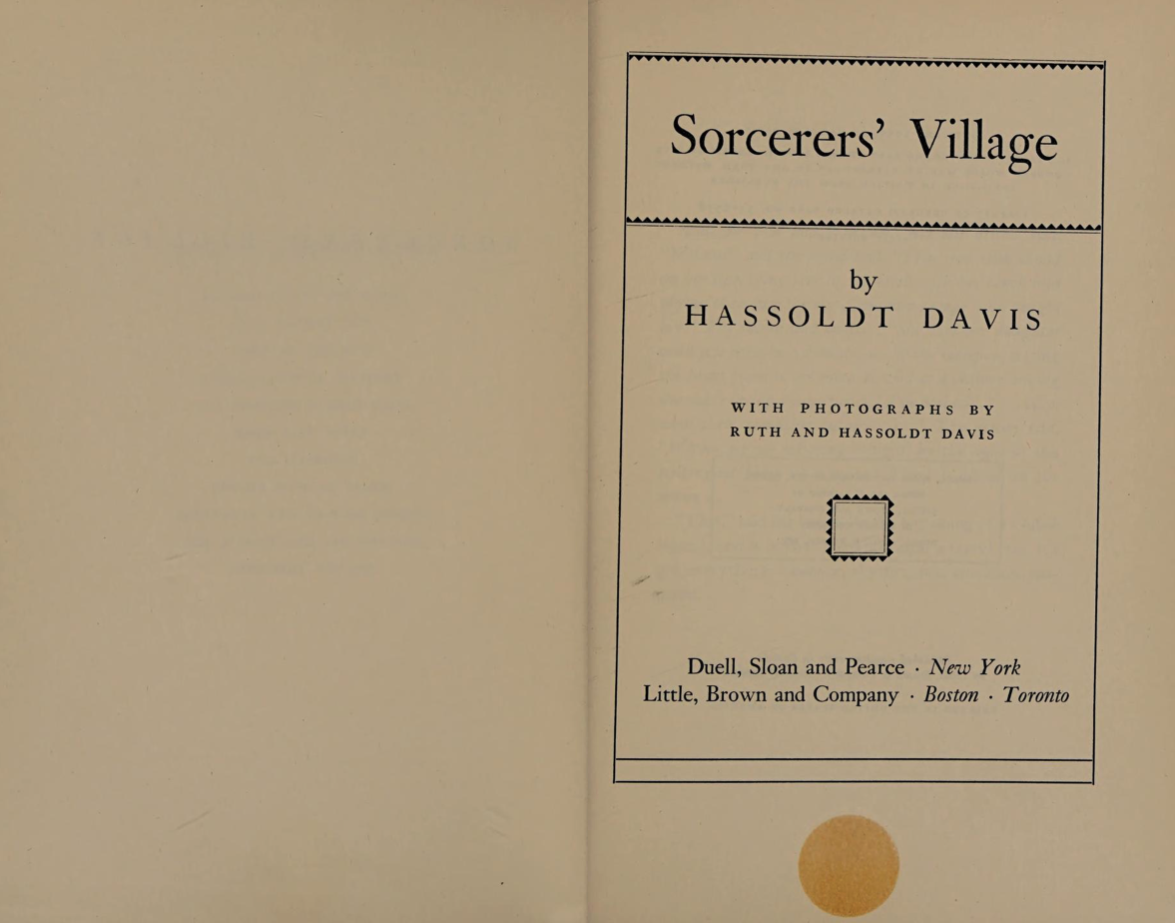
First page of Scorcerer’s Village, published by Hassoldt Davis and Ruth Staudinger-Davis, Duell Sloan and Pearce, 1956 (Photo: Helene Roth). Anonymous. "Ecuador Art Scholar In Surprise Arrival." The New York Times, 9 March 1939.
Anonymous. “Openings Of The Week.” The New York Times, 9 April 1939, p. 147.
Anonymous. “Openings Of The Week.” The New York Times, 16 April 1939, p. 10.
Anonymous. “Wiltwyck – Why Harlem Boys Learn Manhood.” The Layman’s Magazine of the Living Church, no. 14, March 1941, pp. 18–19.
Anonymous. “Fund Begun to Help Refugee Scholars.” The New York Times, 21 November 1969, p. 55.
Anonymous. “Dr. Else Staudinger Dies at 76; Helped Thousands of Refugees.” The New York Times, 13 March 1966, p. 86.
Anonymous. “Joseph Halle Schaffner Is Dead; Hart, Schaffner, Marx Director.” The New York Times, 11 August 1972, p. 32.
Corley, Pauline. “Heralding New Books.” The Miami Herald, 12 March 1939, p. 62.
Davis, Hassoldt. The Jungle and the Damned. Duell, Sloan and Pearce 1952.
Davis, Hassoldt. Scorcerers' Village. Duell, Sloan and Pearce 1956.
Desfor, Irving. “Camera News.” Journal and Courier, 20 January 1951, p. 33.
Friedman, Lawrence J. The Lives of Erich Fromm. Love’s Prophet. Columbia University Press, 2014.
Günther, Philipp, et al., editors. Sanaa Mtaani. Art in the City. Einblicke in die gegenwärtige Kunst Nairobis. Kastner & Callwey, 2014.
Josef Breitenbach. Photographien. Zum 100. Geburtstag, edited by T.O. Immisch et al., exh. cat. Staatliche Galerie Mortizburg Halle (Saale) / Fotomuseum im Münchner Stadtmuseum, Munich, 1996.
Maloney, Tom. U.S. Camera. Annual 1940. Random House, 1940.
Maloney, Tom. U.S. Camera. Annual 1941. Random House, 1941.
Staudinger, Else. A tribute to Else Staudinger. American Council for Emigrés in the Professions, Inc., 1966.
Thompson, Howard. “Screen: A Documentary; ‘Sorcerers’ Villageʼ Is Set in Africa.” The New York Times, 3 July 1958. Accessed 6 April 2021.
Word Count: 246
Else Staudinger Collection, 1964–1966. Leo Baeck Institute, New York.
Hans Staudinger Papers, 1928–1990. M.E. Grenander Department of Special Collections and Archives, University Libraries, University at Albany, State University of New York.
Miriam Y. Holden Collection, Princeton University Library, Special Collection, Princeton.
Selfhelp for German Refugees Collection, 1937–1977, Leo Baeck Institute, New York.
Word Count: 88
New York, US (1935–1970s).
24 West 59th Street, Central Park South, New York (residence?, 1938); 33 Inwood Road, Inwood, New York City (residence, 1940–?); 501 Madison Avenue, Midtown Manhattan, New York (workplace, Free French Press and Information Center, 1941–1945?); 71 Washington Square, Greenwich Village, New York (residence of her parents, Hans and Else Staudinger, 1950s).
- New York
- Helene Roth. "Ruth Staudinger." METROMOD Archive, 2021, https://archive.metromod.net/viewer.p/69/2948/object/5138-11021558, last modified: 05-11-2021.
-
Walter SandersPhotographerNew York
Walter Sanders was a German émigré photographer. In 1938 he arrived in New York, where he worked from 1939 until the end of his life for the Black Star agency and, from 1944, for Life magazine.
Word Count: 33
Josef BreitenbachPhotographerNew YorkOn arriving in New York in 1941, the German photographer Josef Breitenbach tried to restart as a portrait, street and experimental photographer, as well as a teacher of photo-history and techniques.
Word Count: 30
Rolf TietgensPhotographerEditorWriterNew YorkRolf Tietgens was a German émigré photographer who arrived in New York in 1938. Although, in the course of his photographic career, his artistic and surrealist images were published and shown at exhibitions, his work, today, is very little known.
Word Count: 39
Marion PalfiPhotographerNew YorkMarion Palfi was a German émigré photographer who lived in New York from the 1940s to the 1960s. Her photographic engagement in social and political topics made her name for her use of the camera to draw attention to social injustices.
Word Count: 41
Ernest NashPhotographerArchaeologistLawyerNew YorkErnest Nash was a German born photographer, who pursued his photographic as well as an archeologic interest in Roman architecture after his emigration to New York in 1939. Besides this research interest, he also worked as a portrait photographer and publisher.
Word Count: 40
Carola GregorPhotographerSculptorNew YorkThe German émigré photographer Carola Gregor was an animal and child photographer and published some of her work in magazines and books. Today her work and life are almost forgotten.
Word Count: 30
Trude FleischmannPhotographerNew YorkTrude Fleischmann was an Austrian-Jewish portrait and dance photographer who emigrated in 1939 to New York, where she opened a studio in Midtown Manhattan with the photographer Frank Elmer.
Word Count: 28
5th AvenuePhotobookNew York5th Avenue was the first photobook by Fred Stein and was created in 1947 with the publishing house Pantheon Books.
Word Count: 19
New York World's Fair postcard View of the Constitution Mall looking toward statue of George Washington and Trylon and PerispherePostcardNew YorkShortly after the arrival in New York in 1939, photographs by the German émigré Ernest Nash were used and reproduced for postcards of the New York’s World’s Fair.
Word Count: 29
Christmas Exhibition of The Center for European Immigrant's Art and HandicraftAndreas FeiningerPhotographerWriterEditorNew YorkAndreas Feininger, was a German émigré photographer who arrived in New York with his wife Wysse Feininger in 1939. He started a lifelong career exploring the city's streets, working as a photojournalist and writing a large number of photography manuals.
Word Count: 39
Ruth BernhardPhotographerNew YorkRuth Bernhard was a German émigré photographer who lived in New York from the 1920s to the 1940s. Beside her series on female nudes, her place in the photography network, as well as in the New York queer scene, is unknown and understudied.
Word Count: 43
Erika StonePhotographerNew YorkErika Stone is a German émigré, who moved to New York with her parents and sister in December 1936, at the age of 12. She went on to carve out a career as photographer.
Word Count: 32
Ellen AuerbachPhotographerNew YorkWhen she arrived in New York in 1937, the German-born photographer Ellen Auerbach (formerly Rosenberg) had already passed through exile stations in Palestine and Great Britain.
Word Count: 25
Lilo HessPhotographerNew YorkThe German émigré Lilo Hess was an animal photographer working for the Museum for Natural History and the Bronx Zoo, as well being a freelance photographer and publisher of children's books.
Word Count: 31
Lilly JossPhotographerNew YorkLilly Joss was an émigré freelance photographer in New York. She worked for the Black Star photo agency and magazines and was also a portrait and theatre photographer.
Word Count: 28
Black Star AgencyPhoto AgencyNew YorkThe German émigrés Kurt S(z)afranski, Ern(e)st Mayer and Kurt Kornfeld founded Black Star in 1936. The photo agency established was a well-run networking institution in New York.
Word Count: 31
New School for Social ResearchAcademy/Art SchoolPhoto SchoolUniversity / Higher Education Institute / Research InstituteNew YorkDuring the 1940s and 1950s emigrated graphic designers and photographers, along with artists and intellectuals, were given the opportunity to held lectures and workshops at the New School for Social Research.
Word Count: 31